
Our research
Below, you will find examples of current research topics being undertaken within the department.
Geometric Mechanics of Solids (GEMS)
We are developing an original Geometric Mechanics of Solids (GEMS) to overcome the constraints of the existing phenomenological continuum approaches, produce a pioneering software platform for structural analysis, validate the theory at several length scales, and demonstrate how the new technology solves practical problems for which the present methods are inadequate.
The most rewarding element of the work is the exploration of the possibility that any “property” of matter has purely mathematical origin. If proven, this will eliminate or reduce grossly the need for experimentally derived relations for materials’ behaviour.
In contrast to the classical methods, the engineering materials will be seen as discrete collections of finite entities, or cells; importantly this is not a discretisation of a continuum, such as those used in the current numerical methods, but a reflection of how materials organise at any length scale of observation – from atomic through to the polycrystalline aggregates forming engineering components.
The cellular structure is characterised by distinct elements and we are exploring inventive ways to describe how such a structure behaves by linking energy and entropy to the geometric properties of these elements – volumes, areas, lengths, positions.
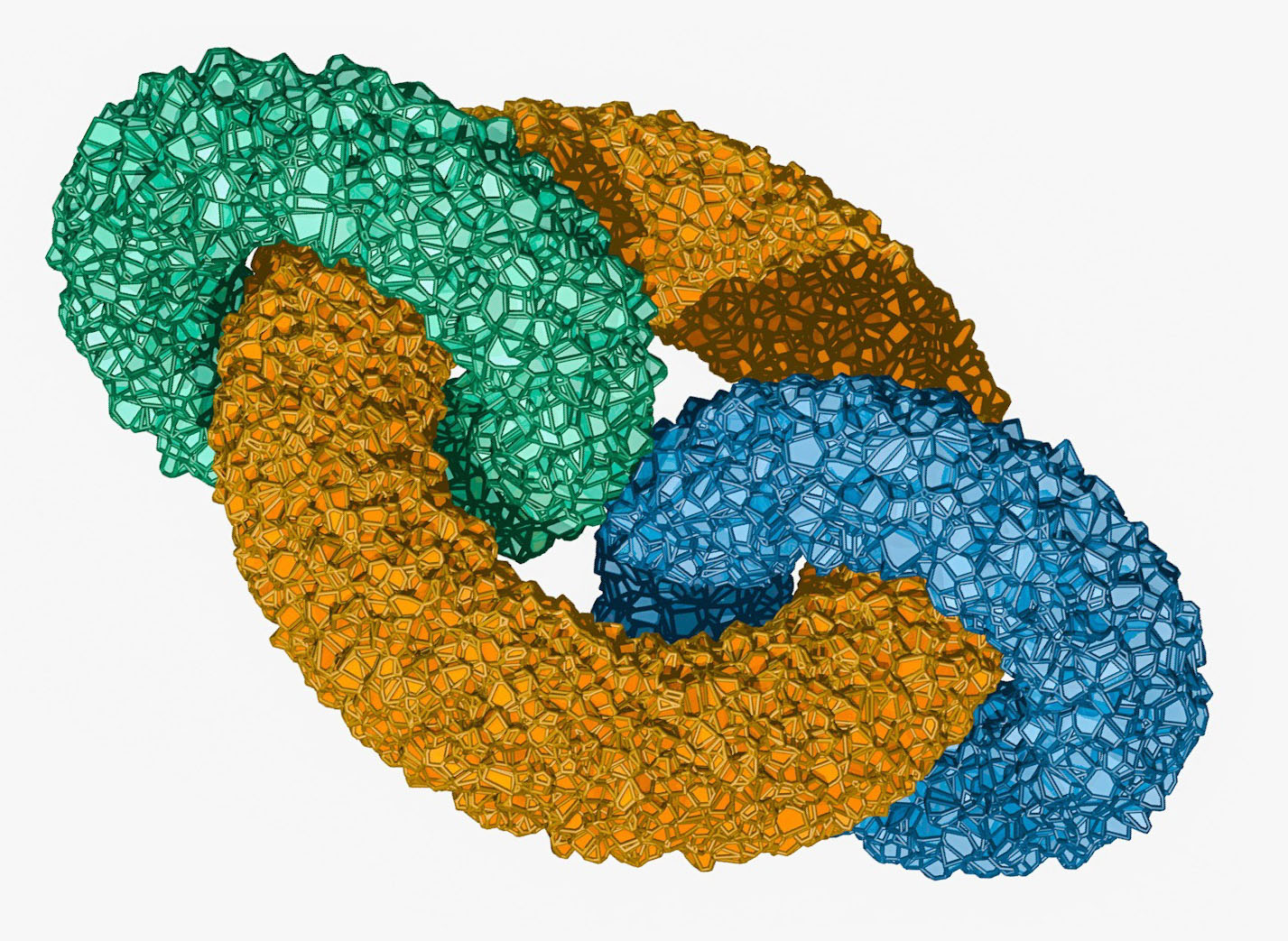
A 3D Voronoi tessellation model
Metallic materials
The focus of our research on metallic materials is to understand the fracture mechanisms and their incorporation into predictive modelling of apparent fracture toughness. This is essential for high-fidelity integrity assessment of critical structural components, particularly in light of increasing demand for life extension of engineering infrastructure and industrial plant.
The local approaches (LAs) to fracture, being developed over the last 40 years, provide the philosophy for incorporation of microstructural features and damage mechanisms. However, in many important cases they are not ready to tackle transferability between experimental results obtained with specific specimens and predictions for given components containing defects.
In addition, the existing LAs consider the possible damage mechanisms independently, leading to separate models for the two main phenomena: ductile and cleavage fracture. This does not allow for adequate modelling – eg of the toughness dependence on temperature, where a combination of the two mechanisms is observed.
Further, environment effects on fracture, such as hydrogen embrittlement and stress corrosion, may modify the overall failure mode by accelerating or inhibiting particular damage mechanisms. We work on development of advanced LAs that can address the transferability and temperature dependence issues, as well as the environment effects, with the aim to establish and validate practical engineering methods for integrity assessment of structures and components operating in demanding environments.

(Left) Three-point bending test on a concrete specimen for fracture toughness testing; (right) finite element model for fracture toughness calculations
Quasi-brittle materials
The focus of our research on quasi-brittle materials and structures, notably cement-based and nuclear graphite, is on predictive modelling of their performance and longevity under complex service conditions (loading and environment). This requires recognition of, and attention to, the role of meso-scale structures and environment effects in controlling damage initiation and evolution in such materials.
For example, nuclear graphite is a key element in existing Advanced Gas-cooled Reactors (AGR) in the UK, where it functions both as a moderator and a core structural component, and is being considered as an option for the next generation high-temperature reactors. AGR core is a system of interlocking graphite moderator bricks, which determines the positions and ensures the mobility of nuclear fuel and control rods. As a moderator, nuclear graphite is exposed to high temperatures and high levels of radiation, which could result in compromising the core integrity due to changes in bricks’ geometric and mechanical properties, over the course of its lifespan.
Nuclear graphite is a major life-limiting component and a poor understanding of the material can result in low plant efficiency or a dangerous criticality level if the damaged graphite effects the control rods, all of which could lead to plant closure and major economic repercussions. Our research advances the understanding of the whole core behaviour by structural modelling and the behaviour of individual bricks by damage and fracture modelling of individual bricks.
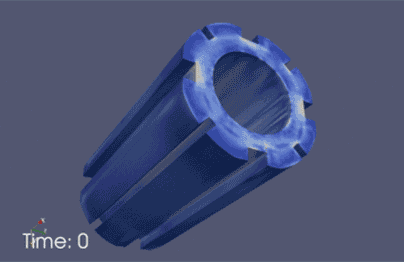
Stress states, crack initiation and crack propagation for a graphite brick within an AGR core
Advanced composite materials and structure
In this research area, our work mainly focuses on advanced polymer fibre-reinforced composite materials and their structural assemblies. One of the advantages of advanced composites is that desirable material properties can be achieved by tailoring the combination of constituent materials and by designing material architecture exploring multiple lengthscales.
To realise such materials, a holistic combination of advanced manufacturing processes, experimental characterisation methods and computational modelling techniques is necessary. In general, this is the research domain we explore in our group for ‘designing materials for engineering design’, while carefully considering the aspects of structural integrity.
More specifically, the current work focuses on advanced composite laminate structures with an emphasis on nano- and micro-toughening in polymer matrices, fibre-hybridisation processes and textile architectures. The effects of such material systems on the integrity of composite structures are investigated: for example, the failure behaviour of adhesively bonded composites joints; the damage tolerance of structural composite repairs; and the impact damage mechanisms and post-impact damage resistance of composite laminates.
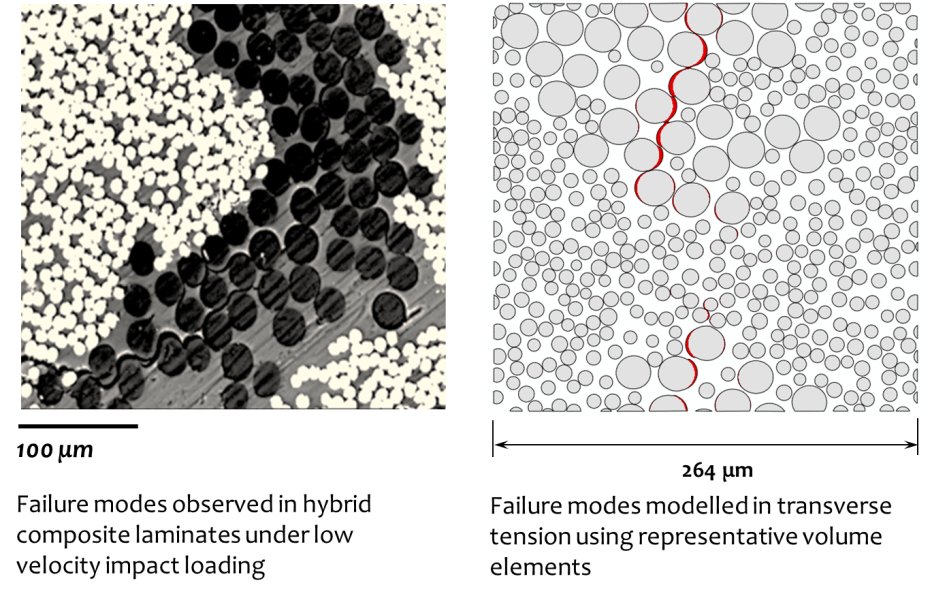
Topology optimisation
The research is related to the theoretical development and the practical applications of the topology optimization method. The method is a computational tool for systematic structural design with the goal of minimizing weight and maximizing stiffness.
Since its introduction two decades ago it has undergone tremendous development and has spread from academia to being the preferred optimization tool in the mechanical, automotive and aerospace industries throughout the world.
Originating in solid mechanics, the method has been applied successfully to a number of other disciplines including fluid mechanics, acoustics, nano-photonics, and electromagnetics.
The method shows its superiority over traditional alternatives in problems with complex physics and multiple constraints where it provides designs with a performance which is out of reach for ordinary engineering methodologies. Such optimized solutions are critical in the modern competitive world, as they ensure optimal use of the limited natural resources.
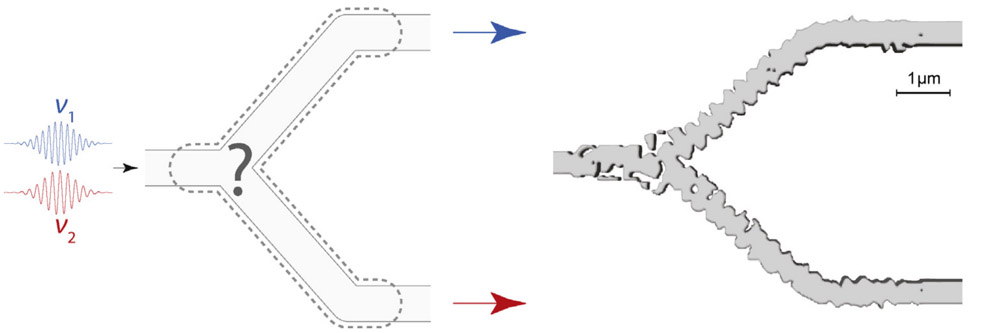
Broadband signal splitter topology optimised design
Transport in porous media
Our research on reactive transport in porous media is focused on supporting a grand engineering challenge – the safe isolation of nuclear waste. This has to be solved to deal with both legacy waste and the waste expected from currently operating and prospective new build plant.
The selected concept is to use a system of engineered barriers in a deep geological repository. These barriers include metallic containers, porous backfills, such as cements and clays, and the host rock with well designed initial function to retain radionuclides. The structure of these materials will change with time due to a number of mechanical, thermal, chemical and bacterial processes, some of which detrimental, while others beneficial for the retaining function.
The knowledge of the function evolution over very long time periods is essential to underpin safety cases and ensure public confidence in the waste isolation. Such knowledge cannot be achieved by experimentation for all anticipated processes and time durations and requires predictive modelling.
Our modelling work aims to improve our understanding of how the mass transport of radionuclides in porous/fractured media evolves with time, and to develop predictive simulation tools, thus underpinning future safety cases for repository designs. We use a set of modelling and interrogation techniques to couple the effects of mechanical, thermal, chemical, and bacterial processes, including pore-network modelling for reactive transport, Lattice-Boltzmann methods for gaseous and liquid transport and most recently peridynamics for analysis of erosion behaviour of clays.
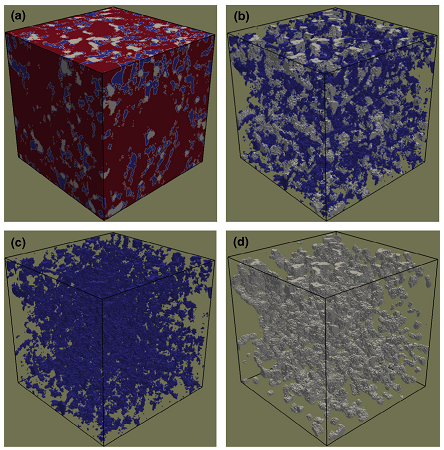
Peridynamics for analysis of erosion behaviour of clays
Activities and events
Find out about seminars and talks in the field of Mechanics and Physics of Solids.
Opportunities
Discover research opportunities in Mechanics and Physics of Solids and how to apply.
